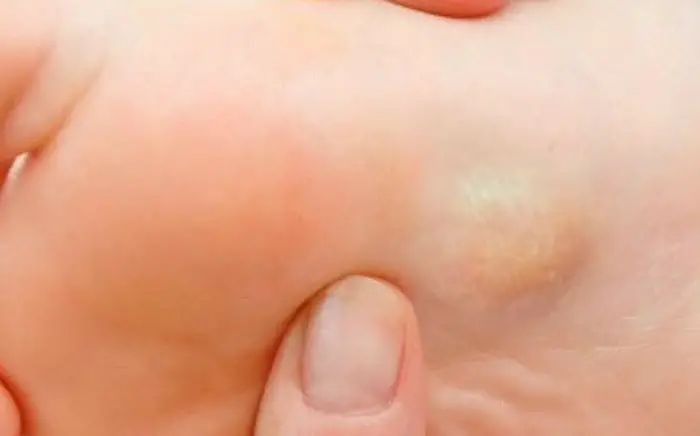Lumps and Bumps
Lumps and Bumps on the Foot: Causes, Diagnosis & Treatment
Noticing a lump or bump on your foot can be concerning — especially if it’s painful, growing, or interfering with your ability to walk. At SoCal Foot and Ankle Doctors, with offices in Santa Monica and the Cedars-Sinai Medical Towers, we specialize in the diagnosis and treatment of foot masses, offering both non-surgical and surgical solutions depending on the underlying cause.

Common Causes of Foot Lumps and Bumps
Foot masses can form for a variety of reasons — ranging from benign fluid-filled cysts to overgrowths caused by chronic stress or injury. Common types include:
- Ganglion cysts – soft, fluid-filled lumps near joints or tendons
- Bone spurs – hard protrusions often caused by pressure or arthritis
- Plantar fibromas – firm nodules embedded in the arch of the foot
- Bursitis – inflammation of the small fluid-filled sacs that cushion joints
- Lipomas – soft, fatty tumors under the skin
- Inclusion cysts – typically from trauma or pressure
- Accessory bones – congenital extra bones that can become symptomatic
- Calluses or corns – from repetitive friction
- Soft tissue tumors or abscesses – rare, but must be ruled out
- Bunions and tailor’s bunions
Symptoms That Require Evaluation
- Painful or tender lump
- Skin redness, warmth, or signs of infection
- Changes in size, shape, or color of the mass
- Pressure when wearing shoes
- Limited mobility or discomfort when walking
Any lump that’s enlarging, painful, or unresponsive to home care should be evaluated by a foot and ankle specialist.
Diagnosis at SoCal Foot and Ankle Doctors
We begin with a detailed clinical examination and may use advanced diagnostic tools:
- Digital X-rays – to assess bone spurs or deformities
- Ultrasound – ideal for detecting cysts and soft tissue masses
- MRI or CT scans – for deep or complex lesions
- Biopsy or aspiration – only if infection or tumor is suspected
Advanced Treatment Options for Foot Lumps and Bumps
Depending on the diagnosis, your custom treatment plan may include state-of-the-art therapies that go beyond standard podiatric care.
Conservative Therapies:
- Custom orthotics to offload pressure points
- Padding or shoe gear modification
- Topical and oral anti-inflammatory medications
- Steroid injections to reduce localized inflammation
- Aspiration or drainage (for fluid-filled cysts)
Advanced & Regenerative Treatments:
We’re proud to offer advanced therapies designed to enhance healing, reduce recurrence, and avoid surgery when possible:
- Fetal tissue allograft injections – used for fibromas or tendon-related masses to promote soft tissue regeneration
- Amniotic stem cell therapy – for chronic soft tissue inflammation or resistant masses
- Platelet-Rich Plasma (PRP) – stimulates healing in areas like plantar fibromas or post-debridement tissue
- Extracorporeal Shockwave Therapy (ESWT) – non-invasive treatment to break up fibrous tissue and stimulate circulation
- Radiofrequency ablation (RFA) – used for small nerve-related lesions or chronic pain from recurrent mass irritation
These advanced therapies are particularly effective for chronic, recurring, or difficult-to-treat lesions where traditional therapies have failed.
Surgical Treatment (If Necessary)
If the mass is large, recurrent, or causing significant discomfort, minimally invasive surgery may be recommended to:
- Excise cysts, fibromas, or bony overgrowths
- Remove accessory bones or infected masses
- Correct biomechanical deformities (e.g., bunions causing irritation)
Surgical procedures are performed on an outpatient basis, with most patients returning to walking within days.
Don’t Ignore Foot Lumps or Discomfort
Whether it’s a small bump or a painful mass affecting your movement, early evaluation helps prevent complications and allows for less invasive treatment.
Book an appointment with SoCal Foot and Ankle Doctors in Santa Monica or Cedars-Sinai today and explore modern, effective solutions for any foot mass or lump.
Our Docters
Our Board Certified Podiatrists
Socal Foot and Ankle doctors are committed to delivering the most exceptional treatments.

Board Certified Foot & Ankle Specialist
Office Time
Location: Santa Monica
Mon – Thur: 9:00 AM – 5:00 PM
Friday: 9:00 AM – 5:00 PM

Board Certified Foot & Ankle Specialist
Office Time
Location: Santa Monica
Mon – Thur: 9:00 AM – 5:00 PM
Friday: 9:00 AM – 5:00 PM
Request Appointment
NON-INVASIVE ADVANCED TREATMENT
BOARD CERTIFIED
FOOT & ANKLE
Surgeons
Years Experience
Happy Patients
Location
Local Partners
